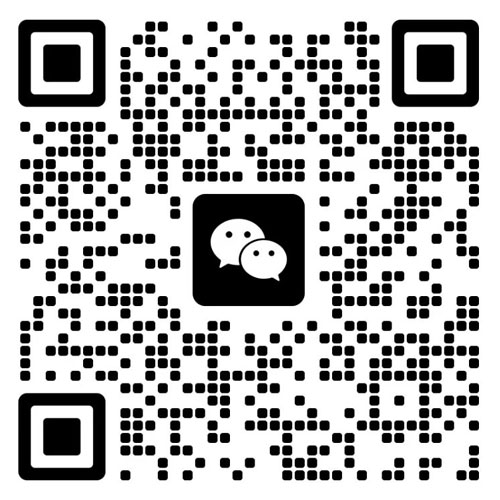Ashtanga Yoga&Mysore Style
SOHAM
Spirituality Oneness Happiness Awareness Meditation

Ashtanga Vinyasa Yoga is a style of yoga popularise by K. Pattabhi Jois during the 20th century, often promoted as a modern-day form of classical Indian yoga. He claimed to have learnt the system from his teacher, Tirumalai Krishnamacharya. The style is energetic, synchronising breath with movements. The individual poses (asanas) are linked by flowing movements (vinyasas). Jois established his Ashtanga Yoga Research Institute in 1948. The current style of teaching is called Mysore style after the city in India where the practice was originally taught.
阿斯汤伽串联瑜伽是由 K.Pattabhi Jois创⽴的,并在 20 世纪流⾏的⼀种瑜伽风格,经常被推⼴为现代的⼀种经典印度瑜伽。Pattabhi Jois跟随Tirumalai Krishnamacharya进⾏了系统的学习。阿斯汤加的风格充满活⼒,呼吸与动作同步。每个体式通过串联进⾏连接。Pattabhi Jois于 1948 年建⽴了阿斯汤伽瑜伽学院。⽬前的教学风格被称为Mysore,Mysore(迈索尔)来源于印度最早开始阿斯汤加教学的城市名。
Usually an Ashtanga Vinyasa practice of asanas begin with five repetitions of Surya Namaskara A and five repetitions of Surya Namaskara B, followed by a standing sequence. Following this the practitioner progresses through one of six series, followed by a standard closing sequence. The six series are: 1. The Primary series: Yoga Chikitsa, Yoga for Health or Yoga Therapy 2. The Intermediate series: Nadi Shodhana, The Nerve Purifier (also called the Second series) 3. The Advanced series: Sthira Bhaga, Centering of Strength 1. Advanced A, or Third series 2. Advanced B, or Fourth series 3. Advanced C, or Fifth series4. Advanced D, or Sixth series “ Ashtanga vinyasa yoga emphasizes certain main components, namely tristhana ("three places of action or attention", or the more physical aspects of poses) and vinyasa (which Jois defines as a system of breathing and movement). 通常阿斯汤伽瑜伽练习是以五个拜⽇式 A 和五个拜⽇式 B 开始的,接着是站⽴序列。根据练习者的进度分为六个序列。最后有一个标准的结束序列。Tristhana即三位⼀体(三个地⽅的注意⼒或⾏为,凝视点,以及更多的⾝体⽅⾯的体式)和串联(即Jois定义的呼吸和体式的系统)。
Tristhana means the three places of attention or action: breathing system (pranayama), posture (asana), and gazing point (drishti). These are considered core concepts for ashtanga yoga practice, encompassing the three levels of purification: the body, nervous system and the mind; and are supposed to be "performed in conjunction with each other". The asanas in ashtanga yoga follow a set sequence as described above. Their stated purpose is to increase strength and flexibility of the body. Officially, the style has very little alignment instruction. Breathing is ideally even and steady in the length of the inhale and exhale. 三位⼀体是指三个地⽅的注意⼒或⾏为:呼吸控制法、体式和凝视点。这些被认为是阿斯汤加瑜伽练习的核⼼概念,包括三个层次的净化:⾝体,神经系统和⼼灵,三者相互协作”。阿斯汤伽瑜伽的体式练习是遵循⼀套固定的序列,如上⾯提到的六个序列。它们的⽬的是增加⾝体的⼒量和灵活性。总体上,这种风格会⽐较少正位的指引。理想的呼吸在吸⽓和呼⽓的长度上都是均匀和稳定的。
Vinyasas are flowing sequences of movements that connect each asana with the next. Modern vinyasa yoga in addition coordinates the breath with the vinyasa transition movements between asanas. According to Sharath Jois, the purpose of vinyasas is to purify the blood, which is otherwise heated and supposedly contaminated by the practice of asanas.“ Vinyasas串联和流动的意思是将⼀个体式与下⼀个体式连接起来的流动的序列。现代串联瑜伽强调协调呼吸,甚⾄在体式的过渡之间也保持着这种呼吸的协调。按照Pattabhi Jois的说法,串联的⽬的是净化⾎液,通过体式练习,让⾝体产热⽽达到。Drishti is the location where one focuses the eyes while practicing asana. In the ashtanga yoga method, there is a prescribed point of focus for every asana. There are nine dristhis: the nose, between the eyebrows, navel, thumb, hands, feet, up, right side and left side. Drishti凝视点是练习体式时眼睛聚焦的位置。在阿斯汤加练习中,每⼀个体式都有⼀个特定的凝视点。⼀共有九个凝视点 :⿐⼦,眉⼼,肚脐,拇指,⼿,脚,上,右和左。Breath Although Ashtanga yoga keeps a general principle of steady and even inhales and exhales, the specifics of breath during the asanas are debated. “In his book Yoga Mala, Pattabhi Jois recommends staying five to eight breaths in a posture, or staying for as long as possible in a posture. Breathing instructions given are to do rechaka and puraka, (exhale and inhale) as much as possible. "It is sufficient, however, to breathe in and out five to eight times in each posture.” In an interview regarding the length of the breath, Pattabhi Jois instructs practitioners to (translated quote), "Inhale 10 to 15 seconds then exhale also 10 to 15 seconds". He goes on to clarify, "(As) your breath strength is possibly 10 second inhalations and exhalations,. 5 is possible, you do 5". His son Manju Jois also recommends taking more breaths in difficult postures. Various influential figures have discussed the specific process of breathing in Ashtanga. Pattabhi Jois recommended breathing fully and deeply with the mouth closed, although he did not specifically name this as Ujjayi breathing. However, Manju Jois does, and refers to breathing called "dirgha rechaka puraka, meaning long, deep, slow exhalations and inhalations. It should be dirgha... long, and like music. The sound is very important. So its similar to do the Ujjayi breathing". As far as other types of pranayama in Ashtanga, the consensus seems to be they should be practiced after the asanas have been mastered. Pattabhi Jois originally taught pranayama to those practicing the second series, and later changed his mind, teaching pranayama after the third series. Breath 虽然阿斯汤加瑜伽在吸⽓和呼⽓中⼤体上保持稳定的原则,但在体式的具体呼吸上是有争议的。“Pattabhi Jois在他的著作《 Yoga Mala 》瑜伽瑪拉中建议在⼀个体式中保持5到8个呼吸,或者在⼀个体式中尽可能保持长时间。给出的呼吸指令是尽可能多地呼吸。”尽管在每⼀个体式中保持5 到8次的呼吸是⾜够的。“但在⼀个采访中,Pattabhi Jois提及有关呼吸的长度时指出,他指导练习者“吸⽓10-15秒,同样呼⽓10-15秒”。他继续解释”(如果你的呼吸强度可已达到10 秒钟的吸⽓和呼⽓,那么你就可保持5次呼吸。“.他的⼉⼦Manju Jois也建议在难的体式中多停留⼀些呼吸。很多有影响⼒的⼈都讨论了关于阿斯汤加呼吸的具体过程。Pattabhi Jois建议闭着嘴进⾏充分⽽深⼊的呼吸,尽管他并没有明确地将其称为乌加依呼吸。然⽽,他⼉⼦Manju Jois却有提及,并把这种呼吸称为“Dirgha rechaka puraka”,意为深长⽽缓慢的呼⽓和吸⽓。应该是深长的,像⾳乐⼀样。声⾳很重要。与乌加依呼吸⾮常相似“.⾄于阿斯汤伽的其他的呼吸控制法,⼤家所达到的共识是它们应该在体式掌握之后练习。Pattabhi Jois最初是教已经达到第⼆个序列的⼈呼吸控制法,后来改成在第三个序列之后才教呼吸控制法。”Bandhas are one of the three key principles in Ashtanga Vinyasa Yoga, alongside breath and drishti. There are three principal bandhas which are considered internal body locks: • Mūla Bandha; or root lock at the pelvic floor (drawing in the perineum) • Uḍḍīyāna Bandha; drawing back the abdomen, 2 inches below the navel • Jālaṅdhara Bandha; throat lock, achieved by lowering the chin slightly while raising the sternum. Both Pattabhi Jois and Sharath Jois recommend practicing Mula and Uddiyana bandha even when not practicing asana. Pattabhi Jois has this to say: "You completely exhale, apply mulabandha and after inhaling you apply uddiyana bandha. Both bandhas are very important... After bandha practice, take (your attention) to the location where they are applied and maintain that attention at all times, while walking, talking, sleeping and when walk is finished. Always you control mulabandha". Sharath Jois says, "Without bandhas, breathing will not be correct, and the asanas will give no benefit”. Bandhas班达是阿斯汤加瑜伽练习除了呼吸和凝视点以外的三⼤关键原则之⼀。• Mūla Bandha根锁:在盆底的根部或靠近会阴• Uḍḍīyāna Bandha腹锁:在下腹部,肚脐下2⼨• Jālaṅdhara Bandha喉锁:在喉咙,通过轻微的收下巴同时抬⾼胸⾻实现Pattabhi Jois和Sharath Jois 都推荐即使不练习体式也去练习收根锁和收腹锁。Pattabhi Jois有这样⼀句话:“你启动根锁完全呼⽓,然后在吸⽓后收腹锁。这两个收束都很重要。收束的练习后,把你的注意⼒放在刚刚启动的位置,并⼀直保持去觉察它,不管是⾛路,说话,睡觉还是散步结束的时候。⼀直控制你的根锁。Sharath Jois说“没有收 束,呼吸就不会正确,体式也不会带来任何益处”。• What Is Ashtanga practice led ? The teacher will lead a group through the series with all necessary command with breath and movement . There is also followed the details with the same series which is going to teach , which mention above according in different series, 什么是阿斯汤加口令课?⽼师通过必要的呼吸和动作的口令带领⼀群学⽣完成⼀个序列。每个序列都要遵循对应序列所需的细节。
Ashtanga Vinyasa Yoga students are expected to memorize a sequence and to practice in the same room as others without being led by the teacher. The role of the teacher is to guide as well as provide adjustments or assist in postures. So follow own breath and own pace of movement which is followed by breath as vinyasa 什么是MYSORE?练习阿斯汤加的学⽣需要⾃⼰去记住⼀个序列,和其他同学在⼀个教室,在没有⽼师口令带领的情况下完成序列的练习。⽼师同时也需要提供指导和进⾏体式的调整和帮助。所以学⽣可以在串联练习中完全跟随⾃⼰的呼吸和⾃⼰的动作。开篇唱颂 阿斯汤加的练习传统上是从以下的梵⽂唱颂开始的 致敬"帕坦伽利"梵文
vande gurūṇāṁ caraṇāravinde sandarśita svātma sukhāva bodhe |
niḥ-śreyase jaṅgali–kāyamāne saṁsāra hālāhala moha-śāntyai ||
ābāhu puruṣākāraṁ śankha – cakr – āsi dhāriṇam |
sahasra śirasaṁ śvetaṁ praṇamāmi patañjalim ||
Om
英语
I bow to the lotus feet of the Supreme Teacher/Guru who reveals the happiness of Self-Realisation/Pure being which is beyond any joy we have experienced (beyond better):
who like the jungle physician removes the delusion caused by the great poison (Hala Hala) of conditioned existence (Samsara)
译文
我向双盘莲花的古鲁们致敬,他们已经经历自我觉醒所带来的喜悦感,甚至超越了我们所经历的所有喜悦。他就像是丛林里的驱除者,能够驱除一切由于无知这个毒害所带来的迷惑。
以曼陀罗保护咒作为结束唱颂梵⽂
svasti prajābhyaḥ paripālayantāṁ nyāyena mārgeṇa mahīṁ mahīśāḥgobrāhmaṇebhyaḥ śubham astu nityaṁ lokāḥ samastāḥ sukhino译⽂希冀全⼈类开⼼喜悦希望所有的统治者正直端正治国

Soham 索哈姆瑜伽
Spiritual- Oneness- Harmony- Awareness- Meditation
会馆地址:深圳市宝安区西乡街道悦和路蚝业雅苑写字楼308
电话/微信:15018527642
地铁:西乡站B出口 碧海湾站C出口
公交:西乡公交总站 西乡地铁站
营业时间:8:00-21:00
Namaste 🙏
版权声明:部分图文来源于网络,联系侵删
 客服/售后微信
客服/售后微信 微信公众号:约课宝
微信公众号:约课宝


